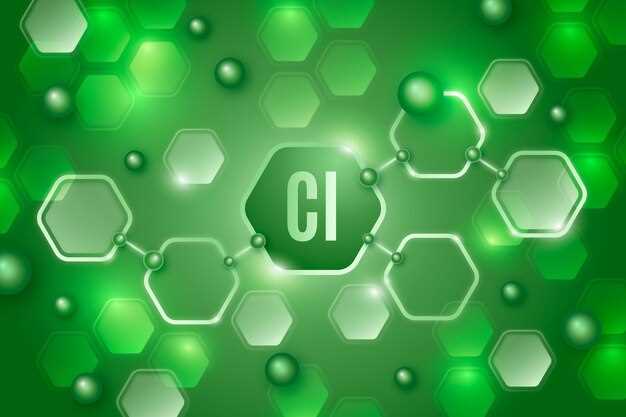
Are you looking for an effective treatment for high blood pressure? Look no further than Valsartan and Hydrochlorothiazide!
Valsartan and Hydrochlorothiazide are two powerful medications that work together to lower your blood pressure and keep it under control. Valsartan is an angiotensin II receptor antagonist, while Hydrochlorothiazide is a diuretic.
By combining these two medications, you get the benefits of both in one convenient pill. Valsartan helps relax your blood vessels, allowing blood to flow more easily, while Hydrochlorothiazide helps your body get rid of excess fluid, reducing fluid buildup and lowering your blood pressure.
So, what is Valsartan and Hydrochlorothiazide used for? It is used to treat hypertension, or high blood pressure, in adults. If you have been diagnosed with high blood pressure, this medication may be just what you need to keep it under control and improve your overall health.
Don’t let high blood pressure rule your life. Take action today and talk to your doctor about Valsartan and Hydrochlorothiazide. It’s time to take control of your health and live a happier, healthier life!
Overview

Valsartan and hydrochlorothiazide is a combination medication used to treat high blood pressure. It contains two active ingredients: valsartan, which is an angiotensin II receptor blocker, and hydrochlorothiazide, which is a diuretic. This combination helps to lower blood pressure by relaxing the blood vessels and reducing the amount of fluid in the body.
High blood pressure, or hypertension, is a common condition that affects millions of people worldwide. It can lead to serious health problems, including heart disease and stroke. Valsartan and hydrochlorothiazide can help to manage and control high blood pressure, reducing the risk of these complications.
By blocking the actions of angiotensin II, valsartan helps to relax and widen the blood vessels, making it easier for blood to flow through them. This helps to lower blood pressure. Hydrochlorothiazide works by increasing the amount of urine produced by the kidneys, which helps to remove excess fluid and salt from the body. This also helps to reduce blood pressure.
It is important to take valsartan and hydrochlorothiazide as prescribed by your doctor and to follow a healthy lifestyle that includes regular exercise, a balanced diet, and reducing stress. This combination medication can be an effective tool in managing and controlling high blood pressure, but it is not a cure. It is important to continue taking the medication even if you feel well, as high blood pressure often has no symptoms.
Benefits
Valsartan and hydrochlorothiazide is a medication that combines two active ingredients to provide multiple benefits for patients.
1. Blood pressure management: Valsartan, an angiotensin receptor blocker (ARB), helps relax and widen blood vessels, which reduces blood pressure. Hydrochlorothiazide, a diuretic, removes excess fluid from the body, further lowering blood pressure.
2. Treatment of hypertension: This medication is commonly prescribed to treat high blood pressure, also known as hypertension. By effectively lowering blood pressure, it helps reduce the risk of heart attacks, strokes, and other cardiovascular complications.
3. Edema control: Valsartan and hydrochlorothiazide’s diuretic effect helps control the accumulation of fluid in the body, reducing edema (swelling caused by excess fluid) in various conditions, such as congestive heart failure and certain kidney disorders.
4. Simplified dosing: This combination medication allows for simplified dosing compared to taking two separate medications. It provides convenience for patients who need both valsartan and hydrochlorothiazide in their treatment regimen.
5. Potential kidney protection: Studies have shown that valsartan, one of the components of this medication, may have a protective effect on the kidneys. It can help slow down the progression of kidney disease and reduce the risk of kidney failure in certain patients.
It is important to note that the benefits of valsartan and hydrochlorothiazide may vary for each individual. A healthcare professional can determine whether this medication is suitable for an individual’s specific condition and provide personalized guidance.
Indications
Valsartan and hydrochlorothiazide are used to treat high blood pressure (hypertension). This combination medication helps lower blood pressure by relaxing the blood vessels and increasing urine output.
Hypertension:
This medication is indicated for the treatment of hypertension, which is a condition characterized by high blood pressure. High blood pressure can increase the risk of heart disease, stroke, and other health problems. Valsartan and hydrochlorothiazide work together to lower blood pressure and reduce the risk of these complications.
When used as directed by a healthcare professional, valsartan and hydrochlorothiazide can help control blood pressure and improve overall cardiovascular health.
How it works
Valsartan and hydrochlorothiazide work together to treat high blood pressure. Valsartan belongs to a class of drugs called angiotensin receptor blockers (ARBs). It works by blocking the actions of a hormone in the body called angiotensin II, which causes blood vessels to narrow. By blocking the effects of angiotensin II, valsartan helps relax and widen the blood vessels, reducing blood pressure.
Hydrochlorothiazide is a diuretic, which means it helps your body get rid of excess fluid and salt through urine. It works by increasing the amount of urine produced, which helps lower blood pressure. It also reduces the amount of water in the body, which helps decrease swelling and fluid retention caused by certain medical conditions.
When valsartan and hydrochlorothiazide are combined, they complement each other’s actions and provide a more effective treatment for high blood pressure. The combination of both drugs helps to lower blood pressure levels and maintain them within a healthy range.
Mechanism of action
The mechanism of action of valsartan and hydrochlorothiazide is related to their individual components.
Valsartan:
Valsartan is an angiotensin II receptor blocker (ARB). It works by blocking the action of angiotensin II, a hormone that causes blood vessels to narrow and promote the release of another hormone called aldosterone, which increases salt and water retention. By blocking the action of angiotensin II, valsartan helps relax and widen the blood vessels, reducing blood pressure and improving blood flow.
Hydrochlorothiazide:
Hydrochlorothiazide is a thiazide diuretic. It works by increasing the amount of urine produced, which helps to remove excess salt and water from the body. This helps to lower blood volume and reduce fluid accumulation, which can also lower blood pressure.
The combination of valsartan and hydrochlorothiazide is designed to provide enhanced blood pressure reduction by targeting different pathways involved in blood pressure regulation.
Note: These medications should be taken as prescribed by a healthcare professional and should not be used without proper medical supervision.
Pharmacokinetics
The pharmacokinetics of valsartan and hydrochlorothiazide refer to how the drugs are absorbed, distributed, metabolized, and eliminated by the body.
Absorption
Valsartan is well absorbed orally, with peak plasma concentrations reached within 2 to 4 hours after administration. Hydrochlorothiazide is also well absorbed orally, with peak plasma concentrations occurring within 1 to 2 hours.
Distribution

Both valsartan and hydrochlorothiazide have moderate to high volume of distribution, indicating that they are widely distributed throughout the body tissues. Valsartan mainly binds to plasma proteins, while hydrochlorothiazide has a lower protein binding capacity.
Metabolism and Elimination
Valsartan is primarily metabolized by the liver, undergoing extensive first-pass metabolism. It is then eliminated predominantly in the feces, with a minor portion excreted in the urine. Hydrochlorothiazide undergoes minimal metabolism and is primarily eliminated unchanged in the urine. The half-life of valsartan is approximately 6 hours, while that of hydrochlorothiazide is around 6 to 15 hours.
Overall, understanding the pharmacokinetics of valsartan and hydrochlorothiazide is important in determining the appropriate dosage regimen and ensuring optimal therapeutic effects while minimizing the risk of adverse reactions.
Side effects
While valsartan and hydrochlorothiazide can be effective in treating certain conditions, it is important to be aware of potential side effects. It is recommended to consult with a healthcare professional if any side effects persist or worsen.
Common side effects:
- Dizziness
- Headache
- Fatigue
- Stomach pain
- Nausea
- Dry cough
These common side effects may occur during treatment and usually do not require medical attention unless they persist or become bothersome. However, it is still important to inform a healthcare professional about any symptoms experienced.
Less common side effects:
- Muscle cramps
- Weakness
- Backache
- Skin rash
- Increased sensitivity to sunlight
- Changes in urination patterns
Less common side effects may occur and should be reported to a healthcare professional for further evaluation and guidance. Immediate medical attention may be required if any severe or allergic reactions are experienced.
Common side effects
When taking valsartan and hydrochlorothiazide, there are some common side effects that you may experience. It is important to be aware of these potential side effects so that you can recognize them if they occur and seek medical attention if needed.
- Dizziness
- Headache
- Tiredness or fatigue
- Nausea or vomiting
- Diarrhea
- Stomach pain
- Back pain
- Joint pain
- Increase in potassium levels
- Skin rash
It is important to note that not everyone will experience these side effects, and they may vary in severity. If you experience any of these side effects and they become bothersome or persistent, it is recommended to speak with your healthcare provider. They can provide guidance on how to manage or alleviate these side effects.
Additionally, it is essential to be aware of any signs of an allergic reaction, such as difficulty breathing, swelling of the face or throat, or severe rash. If you experience any of these symptoms, seek immediate medical attention as they can be indicative of a serious allergic reaction.
Remember to always follow your healthcare provider’s instructions and report any side effects or concerns that you may have while taking valsartan and hydrochlorothiazide. Your healthcare provider is the best resource for providing personalized guidance and support for your specific situation.
